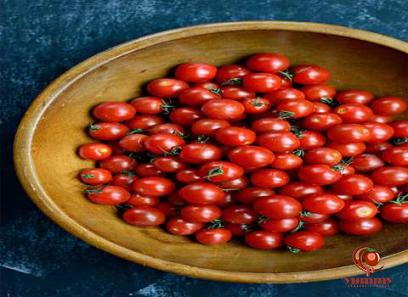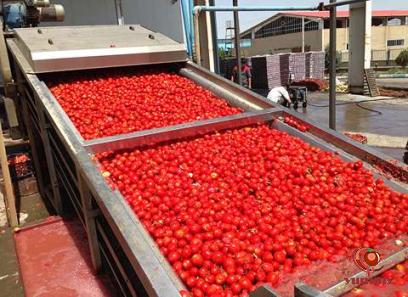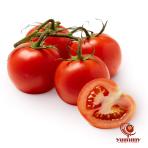dilute tomato paste purchase price + preparation method

When it comes to cooking, the secret ingredient that can elevate any dish to new heights is often a dollop of tomato paste. With its rich flavor and thick consistency, tomato paste is a staple in kitchens around the world. However, not all tomato paste is created equal. Enter dilute tomato paste, a deceptive product that can leave your dishes lacking in both taste and quality. In this comprehensive guide, we will delve into the world of dilute tomato paste, uncovering the truth behind this controversial ingredient. #### What is Dilute Tomato Paste? Dilute tomato paste is a diluted version of traditional tomato paste, typically made by mixing tomato paste with water or other liquid ingredients. While traditional tomato paste is known for its concentrated tomato flavor and thick consistency, dilute tomato paste has a watered-down taste and a thinner texture. This dilution process can occur during the manufacturing of the product or may be done by consumers at home. #### The Controversy Surrounding Dilute Tomato Paste The use of dilute tomato paste has sparked controversy among chefs, food enthusiasts, and industry experts. Many argue that diluting tomato paste compromises the integrity of the product, leading to a less flavorful and inferior end result. In addition, dilute tomato paste may contain added preservatives or artificial ingredients to enhance its flavor, further straying from the pure essence of traditional tomato paste. #### The Impact on Flavor and Texture One of the key differences between traditional tomato paste and dilute tomato paste is the impact on flavor and texture. Traditional tomato paste is prized for its intense tomato flavor, which can add depth and richness to a wide range of dishes. In contrast, dilute tomato paste lacks the boldness and complexity of its concentrated counterpart, often resulting in a bland and uninspired taste. Furthermore, the thinner texture of dilute tomato paste can affect the consistency of dishes, leading to a watery or diluted final product.

.
 This can be particularly problematic in recipes that rely on the thickening properties of tomato paste to create a desired texture, such as sauces, stews, and soups. #### Health Considerations In addition to flavor and texture, the use of dilute tomato paste may raise health concerns for consumers. The dilution process can alter the nutritional profile of the product, potentially reducing the levels of essential vitamins and minerals found in traditional tomato paste. Furthermore, the addition of preservatives or artificial ingredients in dilute tomato paste can contribute to an unhealthy diet and may exacerbate certain health conditions. #### How to Spot Dilute Tomato Paste As a consumer, it is important to be vigilant when shopping for tomato paste to ensure you are getting a high-quality product. To spot dilute tomato paste, look for the following signs: – **Thin Consistency:** Dilute tomato paste will have a watery or runny consistency compared to traditional tomato paste. – **Weak Flavor:** Dilute tomato paste may lack the robust tomato flavor that is characteristic of high-quality tomato paste. – **Added Ingredients:** Check the ingredient list for any added preservatives, artificial flavors, or other additives that are not typically found in traditional tomato paste.
This can be particularly problematic in recipes that rely on the thickening properties of tomato paste to create a desired texture, such as sauces, stews, and soups. #### Health Considerations In addition to flavor and texture, the use of dilute tomato paste may raise health concerns for consumers. The dilution process can alter the nutritional profile of the product, potentially reducing the levels of essential vitamins and minerals found in traditional tomato paste. Furthermore, the addition of preservatives or artificial ingredients in dilute tomato paste can contribute to an unhealthy diet and may exacerbate certain health conditions. #### How to Spot Dilute Tomato Paste As a consumer, it is important to be vigilant when shopping for tomato paste to ensure you are getting a high-quality product. To spot dilute tomato paste, look for the following signs: – **Thin Consistency:** Dilute tomato paste will have a watery or runny consistency compared to traditional tomato paste. – **Weak Flavor:** Dilute tomato paste may lack the robust tomato flavor that is characteristic of high-quality tomato paste. – **Added Ingredients:** Check the ingredient list for any added preservatives, artificial flavors, or other additives that are not typically found in traditional tomato paste.
..
 #### The Importance of Quality Tomato Paste While dilute tomato paste may offer convenience and cost savings, it is essential to remember that quality should never be compromised when it comes to cooking. Investing in a high-quality, traditional tomato paste can make a world of difference in the flavor and overall outcome of your dishes. Look for reputable brands that use minimal ingredients and adhere to strict production standards to ensure you are getting the best product possible. #### Cooking Tips and Tricks For those looking to enhance their culinary skills and make the most of their tomato paste, here are some tips and tricks to elevate your dishes: – **Use Sparingly:** Tomato paste is a concentrated ingredient, so a little goes a long way. Start with a small amount and adjust to taste. – **Cook It Out:** Cooking tomato paste in oil or fat can help enhance its flavor and remove any bitterness. – **Pair with Acid:** Adding a splash of vinegar or lemon juice can brighten the flavor of tomato paste and balance out its richness. – **Experiment with Recipes:** Get creative in the kitchen and try using tomato paste in unexpected ways, such as marinades, dressings, or even desserts. #### In Conclusion While dilute tomato paste may offer a quick fix for busy cooks, it is important to consider the impact it can have on the flavor, texture, and overall quality of your dishes. By understanding the differences between traditional tomato paste and its diluted counterpart, you can make informed choices when it comes to selecting ingredients for your cooking endeavors.
#### The Importance of Quality Tomato Paste While dilute tomato paste may offer convenience and cost savings, it is essential to remember that quality should never be compromised when it comes to cooking. Investing in a high-quality, traditional tomato paste can make a world of difference in the flavor and overall outcome of your dishes. Look for reputable brands that use minimal ingredients and adhere to strict production standards to ensure you are getting the best product possible. #### Cooking Tips and Tricks For those looking to enhance their culinary skills and make the most of their tomato paste, here are some tips and tricks to elevate your dishes: – **Use Sparingly:** Tomato paste is a concentrated ingredient, so a little goes a long way. Start with a small amount and adjust to taste. – **Cook It Out:** Cooking tomato paste in oil or fat can help enhance its flavor and remove any bitterness. – **Pair with Acid:** Adding a splash of vinegar or lemon juice can brighten the flavor of tomato paste and balance out its richness. – **Experiment with Recipes:** Get creative in the kitchen and try using tomato paste in unexpected ways, such as marinades, dressings, or even desserts. #### In Conclusion While dilute tomato paste may offer a quick fix for busy cooks, it is important to consider the impact it can have on the flavor, texture, and overall quality of your dishes. By understanding the differences between traditional tomato paste and its diluted counterpart, you can make informed choices when it comes to selecting ingredients for your cooking endeavors.
…
 Remember, when it comes to tomato paste, quality matters – so choose wisely and savor the delicious results. ### The Hidden Dangers of Using Dilute Tomato Paste While dilute tomato paste may seem like a convenient option for everyday cooking, it is essential to be aware of the potential risks associated with its use. Here are some hidden dangers to consider when using dilute tomato paste: #### 1. Reduced Nutritional Value One of the most significant drawbacks of dilute tomato paste is the reduction in nutritional value compared to traditional tomato paste. The dilution process can lead to a lower concentration of important nutrients, such as lycopene, vitamins A and C, and potassium. These nutrients play a crucial role in supporting overall health and well-being, making it essential to prioritize quality when selecting tomato paste for your recipes. #### 2. Increased Sugar and Sodium Content In an effort to enhance the flavor of dilute tomato paste, manufacturers may add sugar, salt, or other additives to compensate for the diluted tomato flavor. This can significantly increase the sugar and sodium content of the product, leading to potential health risks for individuals with dietary restrictions or underlying health conditions. It is important to read ingredient labels carefully and opt for low-sugar, low-sodium options when choosing tomato paste.
Remember, when it comes to tomato paste, quality matters – so choose wisely and savor the delicious results. ### The Hidden Dangers of Using Dilute Tomato Paste While dilute tomato paste may seem like a convenient option for everyday cooking, it is essential to be aware of the potential risks associated with its use. Here are some hidden dangers to consider when using dilute tomato paste: #### 1. Reduced Nutritional Value One of the most significant drawbacks of dilute tomato paste is the reduction in nutritional value compared to traditional tomato paste. The dilution process can lead to a lower concentration of important nutrients, such as lycopene, vitamins A and C, and potassium. These nutrients play a crucial role in supporting overall health and well-being, making it essential to prioritize quality when selecting tomato paste for your recipes. #### 2. Increased Sugar and Sodium Content In an effort to enhance the flavor of dilute tomato paste, manufacturers may add sugar, salt, or other additives to compensate for the diluted tomato flavor. This can significantly increase the sugar and sodium content of the product, leading to potential health risks for individuals with dietary restrictions or underlying health conditions. It is important to read ingredient labels carefully and opt for low-sugar, low-sodium options when choosing tomato paste.


 Phone number:
Phone number:  WhatsApp Response:
WhatsApp Response:









